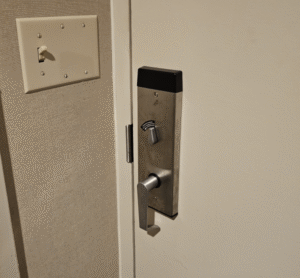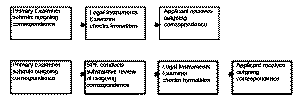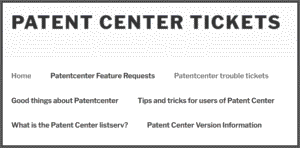
Yesterday I was among the presenters for a day-long class about the Patent Cooperation Treaty at the Detroit patent office. The audience was alert and attentive and had lots of good questions. It was a delightful day.
The hotel room that the organizers of the class booked for me had a door lever that puzzled me. As you can see in the photo at right, the door lever was vertical. I tried to figure out why it was vertical. Was my particular hotel room the only one like this? Was it simply a sloppy mistake by a worker when the hotel was built? If so, why did the mistake not get corrected during the succeeding decades? Or was it intentional that it is vertical? Can you figure it out? Continue reading “Why is this door lever vertical?”


